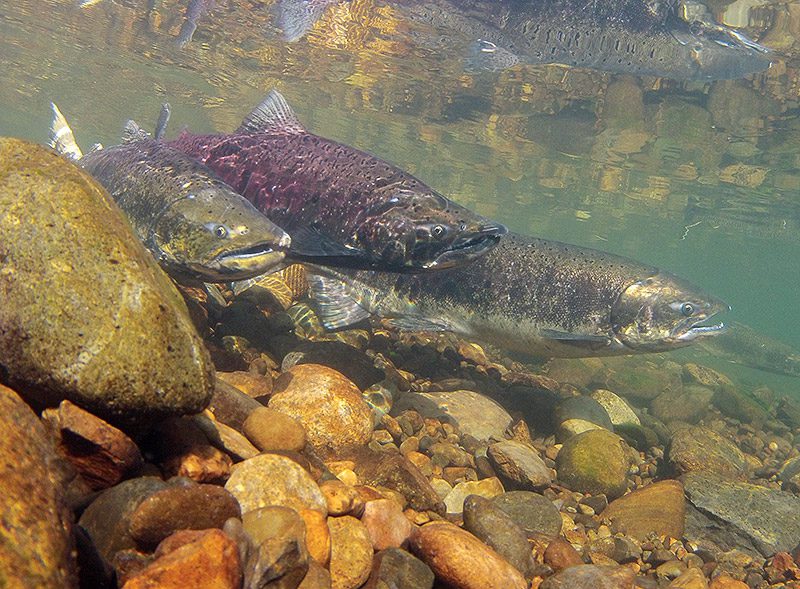Wednesday November 28, 2012

As we noted in our previous post (Casual Spawning), Chinook jacks are not nearly as successful at spawning and passing on their genes, in comparison with larger, older males in a natural stream environment. So if the strategy is not that successful, why do it? The jack strategy is a tradeoff between reduced mortality (i.e., less time in the ocean) and reduced reproductive success (i.e., less likely to successfully reproduce). From an evolutionary perspective, the annual run of jacks may be a bet-hedging strategy that ensures that at least some males will reproduce in case a catastrophic event occurred (e.g., all older males perished due to poor ocean conditions). The ‘life history’ of an organism is essentially the timing of key events in the life cycle. Having a diverse life history within a population is important, whether it is age-at-sexual-maturation, adult-run-timing, or outmigration timing. Life history diversity, in general, can allow population complexes to be resilient to changing environmental conditions. Research has explored just this topic within Central Valley salmon populations (Carlson and Satterthwaite 2011), focusing on potential factors associated with the recent population collapse of fall-run Chinook salmon. Since the Chinook salmon collapse of 2007 the percentage of jacks returning each fall has been on the rise, with jacks comprising 45% of the 2011 Central Valley escapement.
Age-at-maturity is a heritable trait, offspring of younger males are more likely to return as younger males (Hankin et al. 1993). Consequently, at California hatcheries, where artificial mating has replaced sexual selection, age structures differ from structures in natural areas (Grover & Kormos 2008). A recent review of California hatchery practices recommended standards for incorporating jacks into the broodstock selection. The report notes that “Chinook salmon jacks should be incorporated into broodstock at a rate that is lower than their abundance and, ideally, commensurate with their reproductive contribution in the naturally spawning population.” The commission review group specifically recommends that California Chinook salmon hatcheries incorporate jacks into the broodstock at a rate that does not exceed 50 percent of the total number of jacks encountered during spawning operations and in no case more than 5 percent of the total males spawned (Guideline 1.10.1). Life history diversity can help stabilize population complexes, such as fall-run Chinook in the Central Valley, by spreading out the risk. Just like the proverbial saying goes, “don’t put all your eggs in one basket.”
